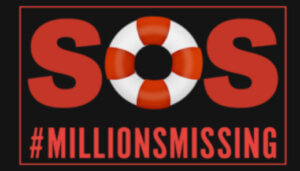November Research 1st – Dr. Nahle’s Letter
I have the privilege of running a public webinar series at the Solve ME/CFS Initiative (SMCI) in which we bring together thought leaders, influencers, and practitioners from multiple disciplines to share ideas and update the community on the most important work in the ME/CFS field. These speaking opportunities create value to the host, guests, and viewers alike. By design, these webinars foster the exchange of ideas and the dissemination of current and relevant information. Such events are core tenets of scholarly activities and continuing medical understanding. I have always considered this task to be one of my most challenging assignments—and for good reasons: invited lectureships are privileges that must be selected with care and thoughtfulness and reserved for change makers and constructive, committed people with valuable insights. This is relevant particularly in our field, where information must be vetted to weed out myths and fallacies.
In this context, it was truly unsettling to learn about the news of an invited speaker lecturing at the National Institutes of Health (NIH) on November 9, 2016. For decades, the speaker has been a staunch adversary of studying the pathophysiology of ME/CFS and refuses to acknowledge its root cause. I have written many times previously, including in an editorial in March of this year, on the aftermath of the revitalization of the Trans-NIH ME/CFS Working Group—specifically on the perils caused by what I then called “ME/CFS deniers” and “psychosomatization sympathizers.” We will not dedicate additional time to these individuals or elaborate on their misguided theories on our pages other than to make the following three points:
- We must never, under any circumstances, confuse cross-pollination of ideas with cross-contamination. These types of invited engagements from ardent ME/CFS deniers at agency platforms neither add value nor meaningful perspectives to the conversation. Instead, they can undermine the serious ongoing efforts at the NIH and poison the well: a consequence that we all must guard against.
- We are justified, and in fact obligated, to underscore the troubling fact that taxpayers, including ME/CFS patients, are indirectly footing the bill for travel and other related expenses of an ME/CFS denier that is undeniably ridiculing their plight at every platform, including this one sanctioned by the NIH.
- We are better served not lumping the ongoing and sincere scientific efforts at the NIH together with the mistake of inviting a controversial speaker—as shortsighted as that action was. The progress made so far has been slow yet steady and has included public statements by the director of the NIH, bolstered research, the launch of an intramural study, the solicitation of requests for information (RFIs), and supplemental awards to the now impending funding opportunity announcements (FOAs) that we hope will come in an appropriate size and shape.
Any undercurrent that yields to suspicion about the disease must be confronted immediately and assertively. After all, we are operating with decades of deficit in investment and spending on ME/CFS research. That said, all elements of goodwill at the NIH and in the community must be harnessed constructively moving forward so as not to shortchange the NIH’s slow but commendable efforts and our progress to date.






6 thoughts on “Thoughts on NIH speakers from Dr. Zaher Nahle”
As Dr. NAhle wrote in March, “Over the next few years, the NIH intramural study on ME/CFS will yield much-needed information on the molecular underpinnings of this disease. The worry is that as this study progresses with psychosomatization sympathizers among its mix, important clues could be misinterpreted or ignored, thereby shortchanging this whole commendable effort.” To date, an invitation to speak at NIH has been extended to Dr. Shorter and a focus group to develop a questionnaire on PEM is being organized (despite the available objective tests for PEM). Both can be traced back to NINR, the home of the lead clinical investigator of the study, Dr. Walitt. The statistician leading the focus group is also from NINR. This disturbing pattern cannot and should not be ignored.
I agree. I can’t reconcile Dr. Nahle’s two comments- that Brian Wallitt and others who will be leading the study and selecting patients have published or testified to outrageous anti-science positions about ME. This is *not* commendable. NINR (Brian Wallitt) invited Shorter to speak. He is in charge of the day to day of the two year long study.
They have not done one positive thing. If and when I see that NIH money go to bona fide research, I will say they have done something positive, but positive in the sense that giving a scant amount of attention to Millions of sick and dying people is positive- it is positive only if you set the bar incredibly, sickeningly low.
Revealing the molecular underpinnings of cancer, daibetes, migraine has not lowered the prevalence or prevented these diseases- no reason to believe more studies on molecular biology will do much of anything but add to the boastfulness of researchers.
What is needed is new paradigm for addressing ME. More money for the same old antipathic mechaniztic molecular research is wasteful, as far as i am concerned. Its just a side show. Create and rapidly evaluate the pwer of new paradigms to prevent and cure ME.
As I have convinced DHHS t change the goal of the NPS and have cnvinced them to make curative research part of the agenda- i have had some success on pain conditions. But the methods of the NPS and DHHS are dated and assume the cnclusion. Lets not waste any mre time assuming molecular research or omics or any type of research per se is the answer. Lets focus on finding what works and let us rid ourselves of the methodism of certaintists.
Dr Nahle,
Thank you for your crystal-clear statement condemning the Shorter lecture. Your organization has certainly changed from the bad old days of the CAA.
But I’m not so sure about “NIH’s slow but commendable efforts”. So far they have had zero impact on my life. After being sick for a dozen years, few people believe I have “a real illness”. My useless doctor still claims my illness “is primarily psychological”. I still live in poverty and extreme social isolation.
FDA, CDC and NIH could make a real impact on how I am treated by society without spending a dime or writing new grant. They just have to make a very clear, very loud statement that ME patients have a serious biomedical illness, and that abuse of patients by the medical industry will no longer be tolerated.
The policy of non-research hasn’t changed. What we have seen in the past year is an exercise in public relations. We are being managed. NIH is only interested in changing its image enough to shut up its critics. As a former boss used to tell me, a new coat of paint can hide a lot of sin.
The policy won’t change until we identify exactly who is enforcing this policy and apply pressure to those people and institutions. So far we don’t know, and NIH ain’t tellin’. A good place to start is to ask, Who Benefits? I suggest examining the disability insurers and their connections to CDC and NIH. Claiming that ME is “psychological” has saved the insurers billions of dollars. That might just be a coincidence – let’s find out.
I agree 100%. And let’s not forget that the federal government, including medicare and medicaid, which are housed in HHS and Social Security which used to be in HHS is the world’s biggest health and disability insurer and has saved the most from denying ME.
SMCI is much better than the CAA days when it colluded with CDC and NIH to persecute patients and deny science, but it is still letting NIH off the hook too easily here.
JImelis- i,of course agree with you. We have to demand more then boilerplate responses and the same old hype from DHHS. Researchers are not breaking their heads open to create the symbols of a new day for people with ME- or anyone with pain. They continue to plod along the same old worn out paths and claim they are n the cutting edge. They suffer from the verconfidence effect and Dunning Kruger syndrome. Its time we reform the paradigms and pretenses of researchers- failing that we will not be making progress anytime soon with ME.
Comments are closed.